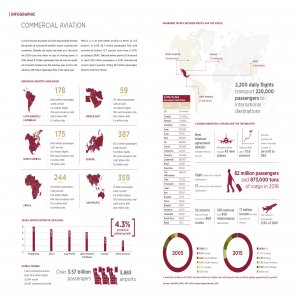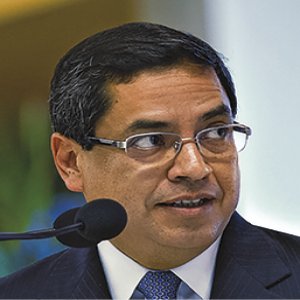Association Helps Make Parks Attractive to Foreign Entities

STORY INLINE POST
Q: What type of companies are affiliated with AMPIP and what are the benefits of being part of the association?
A: AMPIP’s members are mostly developers and suppliers. Among the developers are construction companies, such as Copachisa, Grumesa or Crocsa, and the suppliers include input producers such as CEMEX or Kingspan. AMPIP helps parks achieve certifications that make them attractive to foreign companies. AMPIP’s program to promote international best practices in industrial parks helps our members be prepared for new trends in the market. Our alliance with the Commercial Real Estate Development Association (NAIOP), an equivalent US organization, helps us be aware of future trends coming to Mexico. Companies in the US must engage in certain environmental protection practices that are not obligatory in Mexico yet, so we are preparing for the moment they become compulsory. AMPIP also encourages its members to meet the Mexican Standard for Industrial Parks, which provides evidence of compliance with general public regulations. This makes them attractive to companies because this standard is similar to that in the US.
AMPIP created the Green Industrial Park Recognition based on PROFEPA’s National Program for Environmental Audit. This recognition works as a stepping stone to PROFEPA’s in terms of regulation compliance. It contemplates the correct management of solid waste, as well as energy and water consumption saving. AMPIP works closely with PROFEPA and with the German agency for international cooperation, GIZ, to implement environmental protection and sustainability practices and detect opportunities for sustainability within parks. Having this certification attracts foreign companies that ask for a park’s administration to provide environmental protection evidence.
In terms of security, potential tenants look for parks with international security standards, such as the Authorized Economic Operator (AEO) Program. Led by the World Customs Organization (WCO), this certification is part of a new international trend among countries, to avoid possible terrorist and other kind of risks, along global value chains. As a part of the production chains, every industry should create its own criteria, based on the AEO basic standards. In Mexico, for instance, some automakers require suppliers to be certified under the AEO Program, so that the final car is free of safety risks and trading it can be easier. Due to this new market demand, the AMPIP, together with the Mexican Customs’ Authority, the SAT, created the AEO Program for Industrial Parks, starting in May 2016.
Q: What main challenges is the industrial real estate market facing in Mexico?
A: Our main challenge is the ability to attract potential clients for the leasing of our industrial buildings. The industrial real estate market is directly linked to FDI inflows and demand in the US market because of the North American interdependency. Demand for our spaces is directly related to the country’s attractiveness, so geopolitical uncertainty has a huge negative impact on this market in spite of the availability of other key factors like labor and vicinity to trade routes. Investors place great importance on market certainty, especially when developing industrial parks, which entail huge, long-term and high-risk investments.
Before building an industrial park, investors perform feasibility studies that can take up to one year because of their complexity. If a development is deemed feasible, the land is acquired, the construction and environmental permits are requested, the location is urbanized and then the development is built. AMPIP represents large industrial developers targeting multinational companies that look for state-of-the-art, class A buildings. Developing these buildings poses hurdles: they are expensive to build because of the materials they require, there is no guarantee a company will lease the building when it is finished and finding finance for these projects is difficult since commercial banks find them very risky. Developers now partner with investment funds for financing rather than looking for loans, which results in a more balanced risk allocation.
Q: What commercial models do developers use to meet demand?
A: Build-to-suit and speculative-buildings are the two main models developers use for building industrial facilities. In markets like Costa Rica or Panama the demand is less intense, so developers can build to suit the needs of the client upon arrival. In Mexico, the demand for industrial spaces is intense and competition is tougher. Therefore, developers use the speculative buildings model to offer companies a finished building upon arrival.
Q: What are the key factors that influence the size and location of an industrial park?
A: Due to economies of scale, AMPIP’s members focus on huge developments, which is more cost-effective. It is too costly for a developer to invest US$1 million in a power station, urbanization project or water management facility if they supply a single building. However, if this station supplies 20-100 buildings, the overall costs are reduced for the developer. The costs of labor and other inputs are relatively similar, whether it is a 1,000m2 or a 10,000m2 development. It just makes more sense to go big.
Building an industrial park in any random location is not feasible and several factors must be considered: proximity to trade routes, levels of urbanization, availability of skilled labor and even some amenities related to life quality for foreign investors, including bilingual schools for their children, health services and golf courses. Transportation infrastructure is important when planning an industrial park, yet this depends on the kind of transportation that tenants would prefer. Although large quantities of semi-completed goods pass through the ports, they are not processed near the ports. About 80 percent of manufactured materials in Mexico are transported through land-based logistics channels, mostly targeting the US.
Q: Why do companies look for space in industrial parks instead of leasing their own facility?
A: Industrial parks offer a series of services that mitigate their risks in spite of it being costlier. A multinational company arriving to Mexico cannot take relatively simple risks like water or power shortages or a workers’ strike. An industrial park is a neighborhood protected and serviced by the park’s central administration where tenants are not isolated. Since the park’s administration takes care of security, utilities and maintenance, tenants only have to worry about production.
Q: What role does the public sector play in the development of industrial parks in Mexico?
A: AMPIP makes alliances with state governments in order to ease the process of land acquisition and permit facilitation. Many governments are interested in having industrial parks because they attract companies that create jobs in their regions but these developments require a high level of specialization that few people have. AMPIP encourages state governments to find a partner and build these parks together. Since building such a development takes several years, project continuity between administrations is usually jeopardized. AMPIP is fostering a new model among governments. They put land in a trust and facilitate the permits while investors assume part of the risk and build the urbanization and developments. This way both companies and governments win without getting in each other’s way.
Q: What are AMPIP’s priorities in the short term?
A: We want ProMéxico to list industrial parks as one of Mexico’s attractive strengths besides competitive labor and a number of FTAs. The standard for industrial parks in Mexico is very similar to that of the US or Canada, which makes them attractive. In spite of uncertainty at the beginning of 2017, investment is still flowing in and our members are seeing their businesses grow. Some have reported breaking records.

























